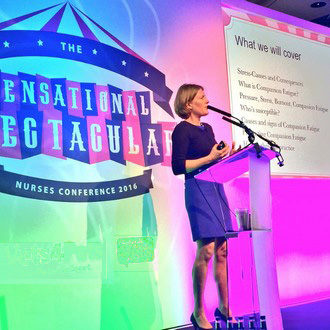I was recently reminded of a film I saw several years ago, based on a book of the same name: Pay it Forward. The plot centres on an 11-year old boy set an assignment to devise and put into action a plan that will change the world for the better – his idea being that when somebody does you a favour, you don’t chalk up a debt to return the good deed one day, instead you ‘pay it forward’ by doing something good for three other people. Who then do the same. And so it goes on.
There are certainly some flaws in the plan (why wait for someone to do something good for you? Do good things because it feels good – after all, a random act of kindness makes you feel fantastic!) But the idea of passing good stuff on works for me, and so I’d like you to think about using a similar principle in your daily life – feeding forward.
When you feed forward you suggest ideas for achieving a more positive outcome; asking the recipient to identify how they want the future to be, understanding what needs to be changed in order to achieve that and creating ideas to enable them to succeed. Rather than focusing on the negatives of the past, feed forward looks at possibilities – what could be done differently. It’s a positive and personalised technique, giving suggestions based on the recipient’s particular strengths and skills.
Everyone needs feedback to know what they are doing right and understand where they can improve. However, the effectiveness of feedback is determined entirely by how it is delivered, and with the feed forward technique you ensure not only that the right message is conveyed, but also that it is received in the right way.
HOW DO I FEED FORWARD?
As a manager or coach, successfully feeding forward is easy when you follow a simple process:
-
- Elicit a story of success
Focus the receiving person on a positive situation and concentrate on the emotions involved (a positive mood is linked to greater creativity and willingness to cooperate). Use questions such as “What has worked well this week?” “Tell me about some of your good cases over the last couple of days” and “How did this make you feel?” - Focus on the peak moment
Encourage the receiver to focus on the most positive part of the situation, what made them feel the most happy/proud/in control (whichever emotion they described in step 1. This will help your colleague foster positive emotions and a positive evaluation of himself/herself. - Clarify the conditions
- What else was going on at that moment?
- Was the environment optimal (did he/she feel prepared and organised and had all the resources to achieve the best result?)
- What was the rest of the team doing?
- How was he/she feeling that day – more able to cope as it came after a day off and thus he/she felt rested and ready to take on the challenge?
- Elicit a story of success
By finding out the answers to these sorts of questions, you will help your colleagues recognise the things they need to take charge of and identify which conditions are important and lead to good outcomes.
- Feed forward to the future
Ask your colleague to identify how they want things to be from now on – what would need to happen for all outcomes to be as successful as the one just described? What would he/she need you and others to help with? What actions will he/she take?
WHAT ARE THE BENEFITS OF FEED FORWARD COMMUNICATION?
- Reframing the current situation and focusing on a positive future not a failed past.
- Removing the potential for helpful direction to be interpreted as ‘my way is better than yours’ by concentrating on solutions, not problems.
- Appropriate for sensitive, critical, analytical thinkers
- Putting people in control by giving them the ideas and tools to do something about it.
- Feed forward can be given by anyone who has knowledge about the task that needs to be performed. You don’t need to know the person or what has already happened. For example, in a meeting, rather than critiquing a situation that has gone wrong, why not talk about future scenarios? Ask everyone for their ideas, opening up conversations and collecting suggestions for action.
- Recipients of feed forward generally implement ideas quicker than those receiving feedback (often there is a period of time where the recipient of feedback tries to prove it wrong).
- A guiding and supportive approach is more effective than a critiquing and negative one.
Ultimately, by feeding forward we can achieve a more dynamic and open workplace; one where the team are focused on growth and improvements for the future.
So, don’t look back – put your best foot forward, be more forward thinking and feed forward.
In my blogs we explore a wide range of topics aimed at helping you improve your wellbeing and develop resilience. If you feel you need to take positive action now, please contact me on 07500 006383 or at carolyne@carolynecrowe.co.uk.
Until next time, very best wishes
Carolyne








